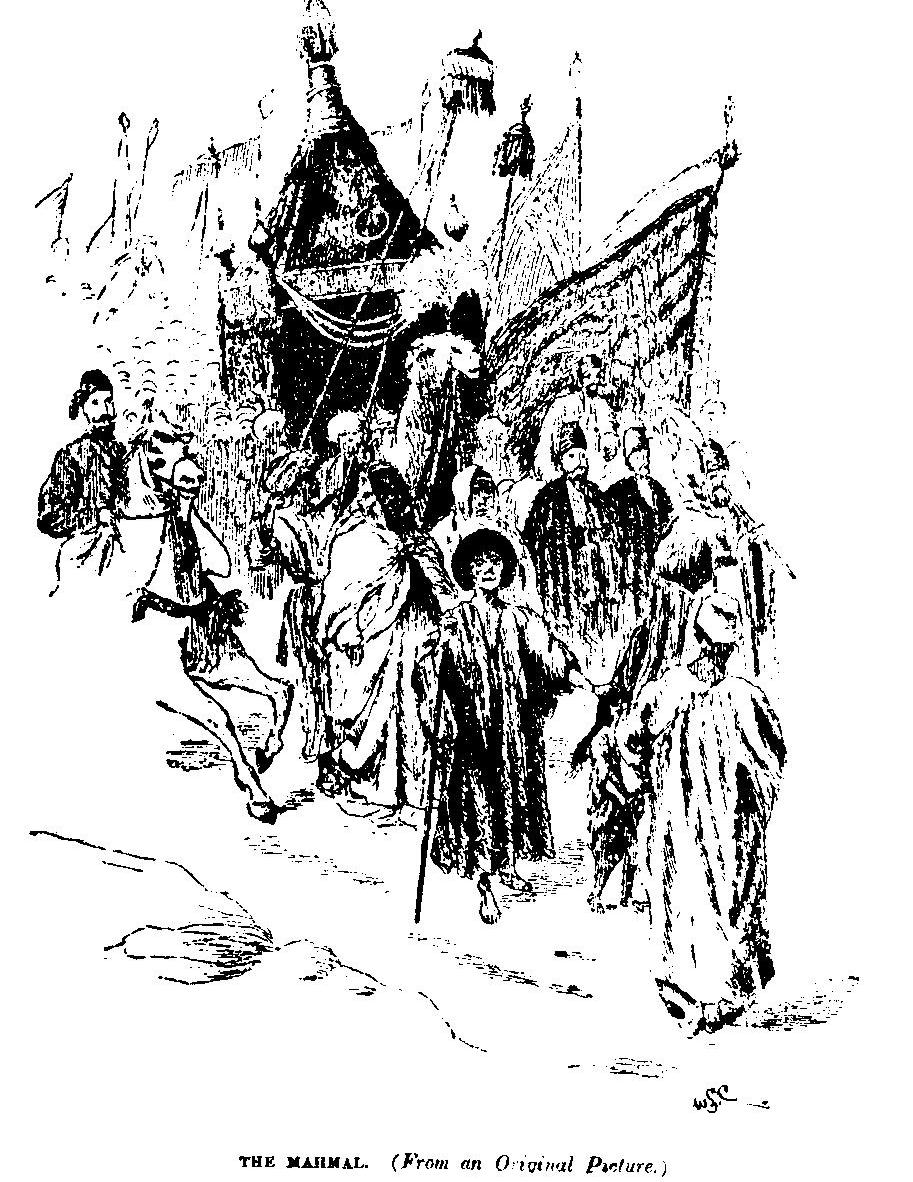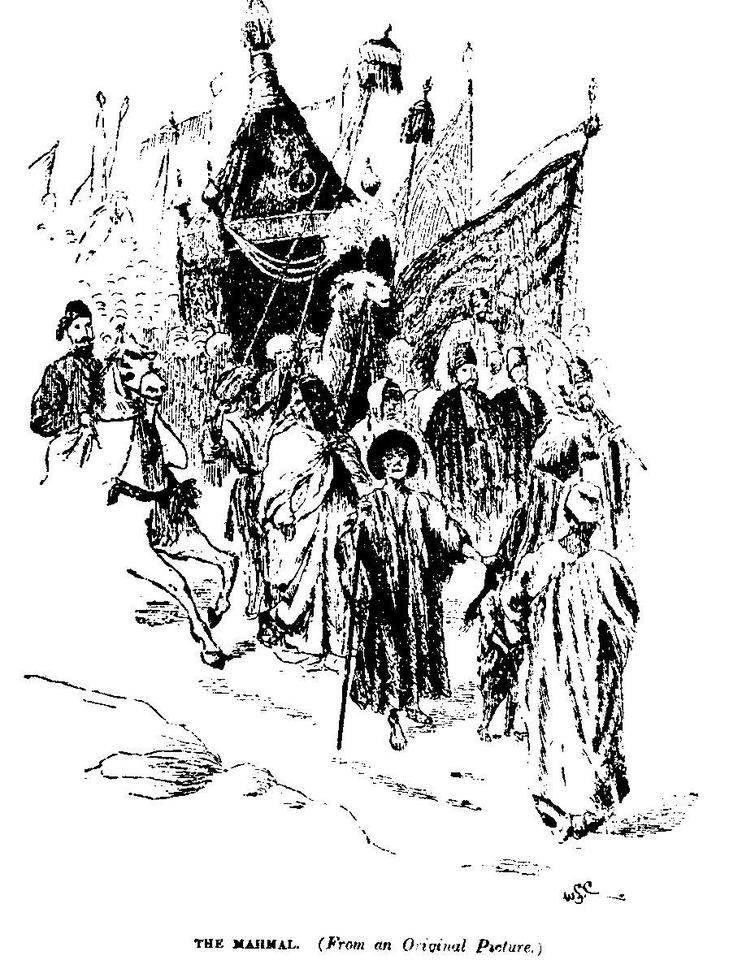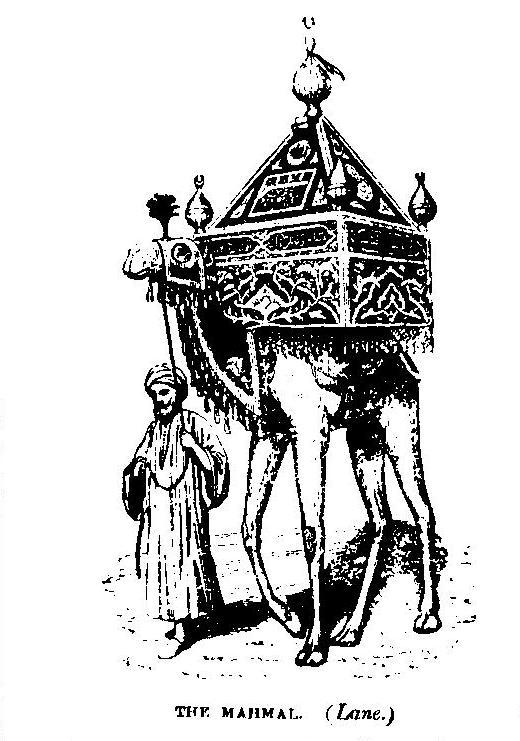A covered litter borne on a camel, both from Cairo and from Damascus, to Makknh, as an emblem of royalty at the time of the pilgrimage.
It is said that Sultan ‘az-Zahir Beaybars, king of Egypt, was the first who sent a mahmal with the caravan of pilgrims to Makkah in A.D. 1272, but that it had its origin a few years before his accession to the throne, under the following circumstances:-
Shaghru ‘d-Durr, a beautiful Turkish

female slave, who became the favourite wife of Sultan as-Salih’ Najmu ‘d-din, and who on the death of his son (with whom terminated the dynasty of Aiyub) caused herself to be acknowledged Queen of Egypt, performed the hajj in a magnificent litter borne by a camel. And for successive years her empty litter was sent yearly to Makkah, as an emblem of state. After her death, a similar litter was sent each veer with the caravan of pilgrims from Cairo and Damascus, and 5 is called muhmal or mahmil, a word signifying that by which anything is supported.
Mr. Lane, in his Modern Egyptains, vol. ii. p. 162; thus describes the mahmal:-
“It is a square skeleton frame of wood with a pyramidal top, and has a covering of black brocade richly worked with inscriptions and ornamental embroidery in gold, in some parts upon a ground of green or red silk, and bordered with a fringe of silk, with tassels, surmounted by silver balls. Its covering is not always made after time same pattern with regard to the decorations; but in every cover that I have seen, I have remarked or the upper part of the front view of the Temple of Makkah. worked in gold, and over it the Sultan’s cipher. It contains nothing; but has two copies of the Kuran, one on a small scroll, and the other in the usual form of a book, also small, each inclosed in a case of
gilt silver, attached externally at the top, the five balls with crescents, which ornament the mahmal, are of gilt silver. Time mahmal is borne by a fine tall camel, which is generally indulged with exemption from every kind of labour during the remainder of its life.”
Eastern travellers often confuse the mahmal with the kiswah, or covering for the Ka’bah, which is a totally distinct thing, although it is made in Cairo and sent at the Same time as the mahmal. [KISWAH.]
The Wahbabis prohibited the mahmal as an object of vain pomp, and on one occasion intercepted the caravan which escorted it. Captain Burton saw both the Egyptian and the Damascus mahmal. on the plain below Arafah at the time of the pilgrimage
Based on Hughes, Dictionary of Islam



 © 2025 All Rights Reserved
© 2025 All Rights Reserved